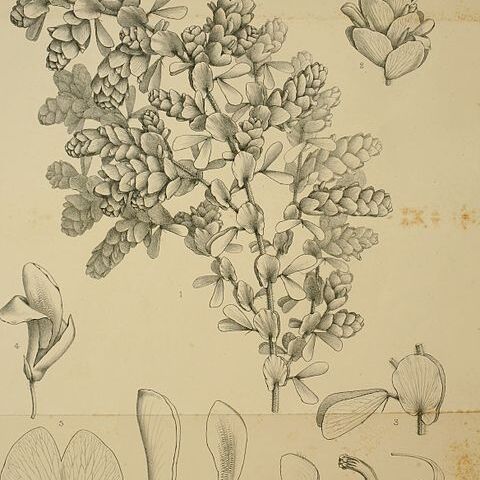Leaves pinnately 2–12-foliolate, the leaflets asymmetrical at the base, often with one part cuneiform and the other rounded or half-cordate, the main nerve eccentric or even marginal; stipules rounded, cordate or unequally auriculate at the base, often similar in size to the leaves, leaf-like or sometimes submembranous or subscarious, persistent or deciduous; stipels absent.
Inflorescences axillary or terminal, in subcylindrical bracteate racemes, generally dense and scorpioid, less often lax and zigzag; bracts big, distichous, bilobed, densely imbricate, sometimes ± hiding the flowers and completely hiding the fruits, mostly membranous and coloured; bracteoles membranous, persistent, nervose.
Standard ± pandurate, narrowed into a claw; wings spathulate, united by their basal appendages, and with a series of small pockets; keel petals obovate, very shortly joined near the apex, narrowed into a claw.
Fruit somewhat woody, flattened or eventually biconvex, 1–2-jointed, straight or one joint folded back on the other, often beaked by the persistent style-base.
Corolla small or medium-sized, yellow, orange or reddish, often lined with red.
Ovary stipitate, 2-ovuled; style inflexed, glabrous; stigma terminal.
Calyx 2-lipped; lips almost free, the upper ± 2-fid, the lower 3-fid.
Erect or prostrate subshrubs, or less often small shrubs.
Stamens arranged in 2 bundles of 5; anthers uniform.
Seeds rounded-reniform, smooth.
